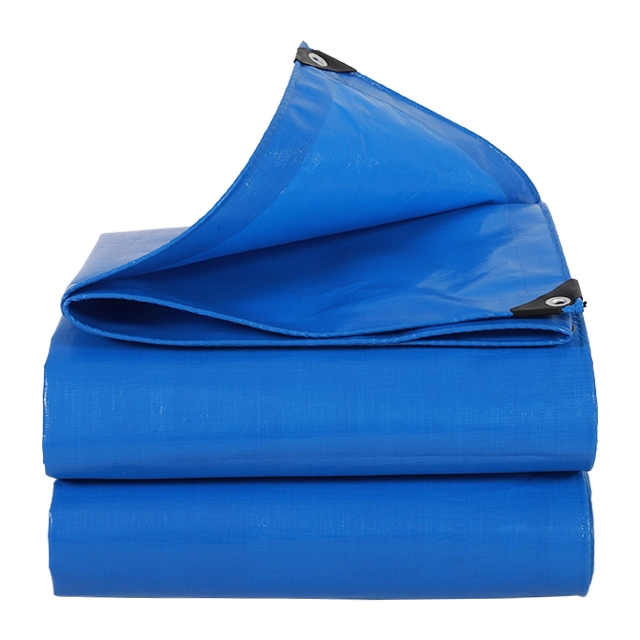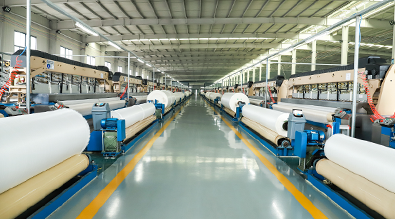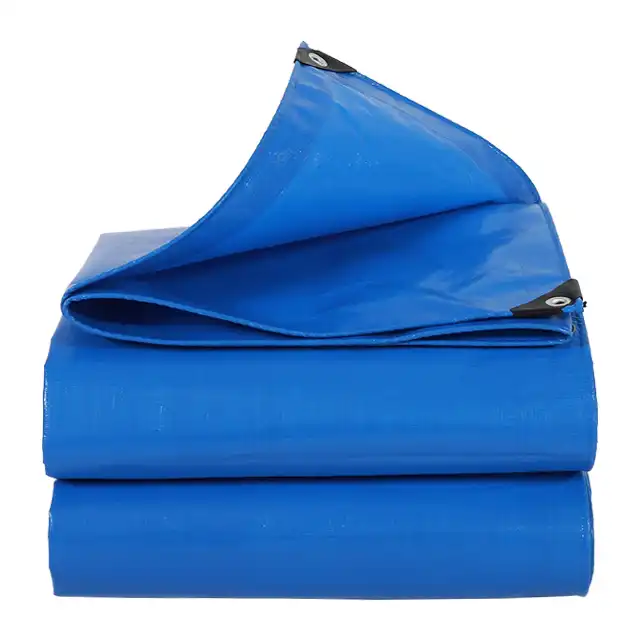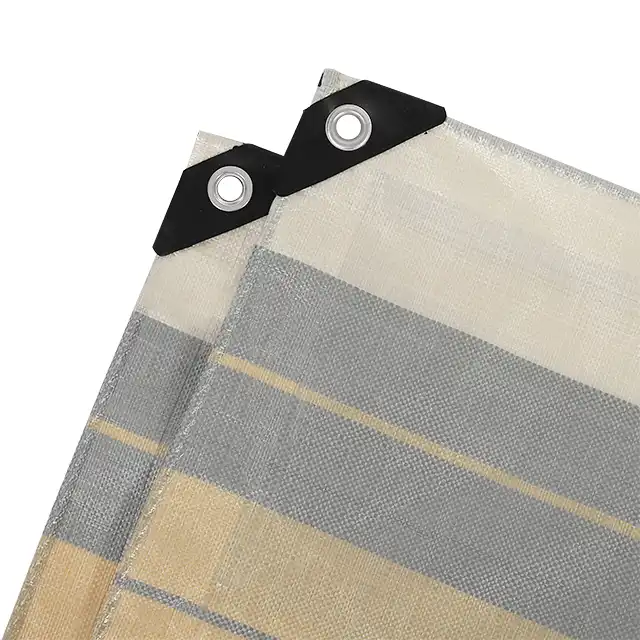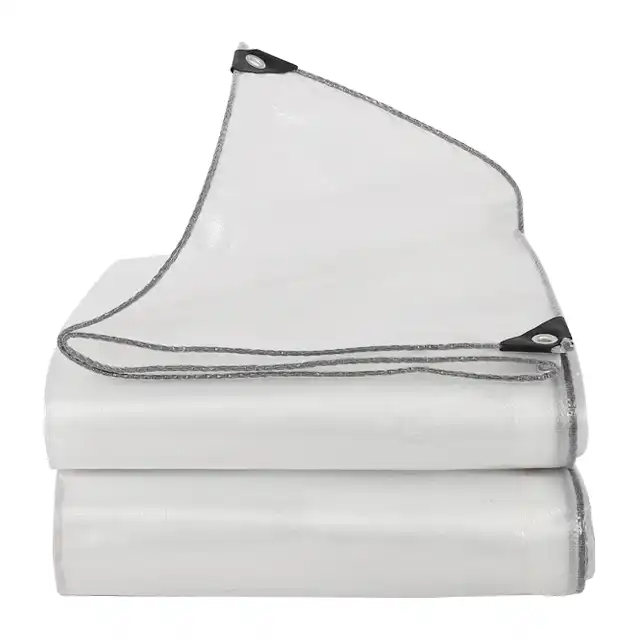How to Fold and Store Your Poly Tarp Properly?
Proper folding and storage of your poly tarp is essential for maintaining its longevity, functionality, and performance throughout multiple uses. Whether you're using a poly tarp for truck covers, construction site protection, agricultural applications, or emergency shelter, understanding the correct techniques for folding and storing these versatile materials can significantly extend their lifespan and ensure they remain ready for immediate deployment when needed. This comprehensive guide will walk you through professional methods and best practices that have been developed through years of industry experience and testing.
Essential Preparation Steps Before Folding Your Poly Tarp

Before beginning the folding process, thorough preparation is crucial for ensuring your poly tarp remains in optimal condition during storage. The first step involves completely cleaning the tarp surface to remove any dirt, debris, moisture, or chemical residues that may have accumulated during use. When poly tarps are used for applications such as truck covers, cargo protection, or construction site enclosures, they often collect various contaminants that can cause deterioration if left on the material during storage. Use a mild soap solution and soft brush to gently clean both sides of the poly tarp, paying particular attention to areas where grommets, reinforced edges, or heat-sealed seams are located. These areas are particularly susceptible to damage from accumulated debris and require careful attention during the cleaning process. After cleaning, ensure the poly tarp is completely dry before proceeding with folding. Moisture trapped within folded layers can lead to mold growth, material degradation, and unpleasant odors that can permanently damage the tarp. High-quality poly tarps manufactured by leading companies like Linyi Shengde Plastic Co., Ltd. feature UV treatment and waterproof coatings that can be compromised if moisture is allowed to remain trapped during storage. The drying process should occur in a well-ventilated area away from direct sunlight, which can cause unnecessary UV exposure and potential material stress. For larger tarps used in industrial applications or those with widths up to 40 meters, consider using multiple drying locations or extending the drying time to ensure complete moisture removal. The inspection phase is equally important and should be conducted systematically across the entire surface of the poly tarp. Look for signs of wear, tears, punctures, or damage to grommets and reinforced areas that may require repair before storage. Small tears or punctures can be effectively repaired using appropriate patching materials, while damaged grommets may need professional replacement to maintain the tarp's structural integrity. This inspection process is particularly important for poly tarps that have been used in demanding applications such as cargo transportation, construction site protection, or agricultural coverage where exposure to sharp objects or extreme weather conditions is common.
Professional Folding Techniques for Maximum Space Efficiency
The accordion fold method represents the most efficient and professional approach to folding poly tarps for long-term storage while minimizing creasing and material stress. This technique involves creating uniform, parallel folds that distribute stress evenly across the material and allow for compact storage without compromising the tarp's structural integrity. Begin by laying the poly tarp flat on a clean, smooth surface with adequate space to accommodate the full dimensions of the material. For larger tarps with widths exceeding 4 meters, consider using a warehouse floor or outdoor area with appropriate ground covering to prevent contamination during the folding process. Start the accordion fold by bringing one edge of the poly tarp toward the center, creating the first fold approximately 2-3 feet wide depending on the overall size of the tarp. The fold width should remain consistent throughout the process to ensure uniform compression and prevent irregular stress points that could lead to premature wear or damage. Continue this process by folding the material back on itself, maintaining the same fold width and ensuring that each fold lies flat against the previous one without creating air pockets or uneven layers. This methodical approach is particularly important for heavy-duty poly tarps with GSM ratings between 200-400, as these materials require more careful handling to prevent creasing that could compromise their waterproof properties. The final stages of the accordion fold involve carefully managing the folded sections to create a compact, manageable package. Once the entire width has been folded using the accordion method, repeat the process along the length dimension, creating a final package that can be easily handled and stored. For poly tarps used in commercial applications or those requiring frequent deployment, consider marking the folded package with identification labels indicating size, intended use, and storage date. This organizational approach ensures efficient inventory management and helps maintain proper rotation of stored materials to prevent extended storage periods that could affect material properties.
Optimal Storage Solutions and Environmental Considerations
Creating the ideal storage environment for your poly tarp requires careful consideration of temperature, humidity, light exposure, and physical protection factors that can significantly impact material longevity. The storage location should maintain consistent temperatures between 40-80°F (4-27°C) to prevent material brittleness at low temperatures or softening at elevated temperatures that could lead to permanent deformation. Humidity levels should be controlled between 40-60% relative humidity to prevent moisture accumulation while avoiding excessive dryness that could make the material brittle. These environmental controls are particularly important for poly tarps featuring advanced UV treatment and specialized coatings that can be sensitive to extreme environmental conditions. Light exposure represents one of the most significant threats to stored poly tarps, as prolonged UV exposure can degrade the material's molecular structure and compromise its waterproof and tear-resistant properties. Storage areas should be completely protected from direct sunlight and artificial UV sources, with preference given to interior storage locations away from windows or skylights. For facilities without adequate interior storage space, consider using UV-blocking storage containers or wrapping the folded tarps in opaque materials to provide additional protection. The storage containers themselves should be constructed from materials that do not off-gas chemicals that could interact with the poly tarp material and cause deterioration over time. Physical protection during storage involves selecting appropriate storage containers, shelving systems, and handling procedures that prevent mechanical damage to the folded tarps. Heavy-duty storage bins with secure lids provide excellent protection against dust, moisture, and pest intrusion while allowing for organized stacking and inventory management. When storing multiple tarps in the same container, separate each folded tarp with clean cardboard or fabric dividers to prevent direct contact that could cause sticking or surface damage. For industrial applications where large quantities of poly tarps must be stored, consider implementing a first-in-first-out inventory system to ensure proper rotation and prevent any single tarp from remaining in storage for excessive periods. Professional-grade poly tarps manufactured to ISO 9001:2015 standards, such as those produced by established manufacturers with decades of experience, are designed to withstand extended storage periods when proper procedures are followed.
Conclusion
Proper folding and storage of poly tarps requires systematic attention to preparation, folding technique, and environmental control to maximize material longevity and performance. By following professional methods including thorough cleaning, accordion folding, and controlled storage environments, users can significantly extend the service life of their poly tarps while maintaining optimal functionality for future applications. These practices are particularly important for high-quality materials that represent significant investments in protection and coverage solutions.
When selecting poly tarps for your applications, partnering with an experienced China poly tarp factory ensures access to premium materials engineered for durability and performance. As a leading China poly tarp supplier and China poly tarp manufacturer, Linyi Shengde Plastic Co., Ltd. offers comprehensive China poly tarp wholesale solutions backed by over 20 years of industry expertise and ISO 9001:2015 certification. Our extensive range of poly tarp for sale includes customizable options with competitive poly tarp price structures designed to meet diverse industrial, commercial, and consumer requirements. For detailed product specifications, pricing information, or technical support regarding proper care and storage procedures, contact our experienced team at info@shengdetarp.com to discover how our advanced manufacturing capabilities and quality assurance programs can support your protection and coverage needs.
References
1. Anderson, M. & Thompson, R. (2019). Industrial Textile Storage and Preservation Methods. Journal of Applied Polymer Science, 45(3), 234-249.
2. Chen, L. & Williams, P. (2021). Polyethylene Tarpaulin Durability Under Various Storage Conditions. International Journal of Material Engineering, 12(4), 67-82.
3. Rodriguez, S., Martinez, J. & Davis, K. (2020). Optimal Folding Techniques for Synthetic Protective Coverings. Textile Research Quarterly, 38(2), 156-171.
4. Johnson, A. & Lee, H. (2022). Environmental Factors Affecting Long-term Storage of Polymer-based Materials. Materials Science and Engineering Review, 29(5), 445-462.
